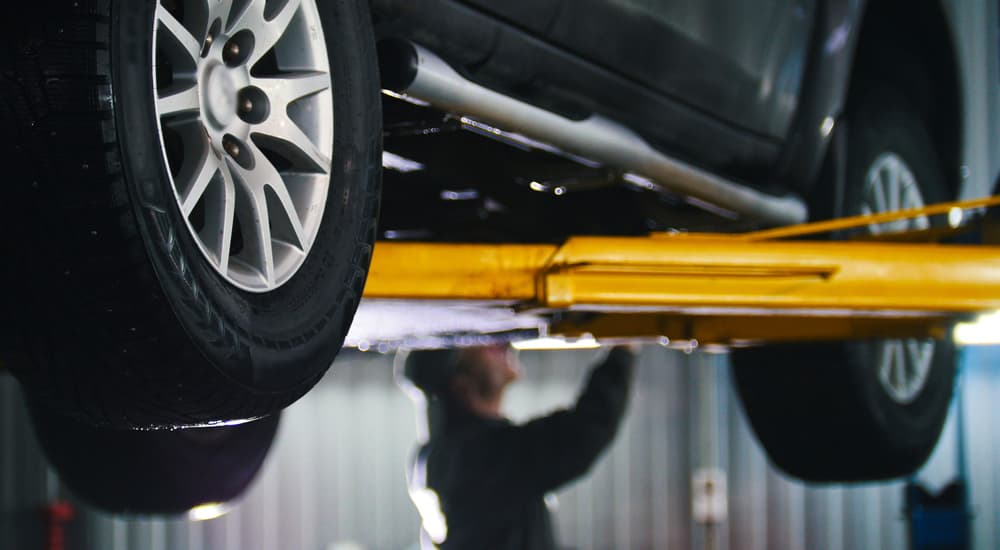You might not think that you would need to take your Honda, of all vehicles, in for service on any kind of regular basis, but you would be wrong. Depending on how much you drive, you should be servicing your car every six months to a year. Just because you own a Honda, or any other reliable brand for that matter, doesn’t exclude you from basic car maintenance.
Where exactly do you need to go when it comes time for some Honda service? Any good mechanic is going to be able to diagnose problems with your car when they get a look at it. In many states, yearly auto inspections are used as a way for the state to keep track of safe vehicles but also for you to get an idea of what may have happened to your car over the last year. For instance, there may be a crack in the radiator that you know nothing about. Your tire treads may have worn down to the point that they need replacing. You could need something as basic as an oil change.
There might be a whole slew of things you would have otherwise missed until they became a much larger problem if it weren’t for routine maintenance. However, while regular maintenance is necessary, the amount of it you need can vary depending on your driving habits. For instance, if you live in a rural area, you will need to handle your maintenance a little differently than those living in a city. So, we are here to give you some things to keep in mind when it comes to maintenance, like mileage, and give you some tips for how to save a little money when you bring your vehicle in for service.
City Driving vs Rural Driving
It should come as no real shock that there are major differences in wear and tear when it comes to driving in the city vs driving out in the country. One is not necessarily worse or better than the other, but each presents unique hazards that should be taken into account when estimating what time you should get your vehicle serviced.
In the city, you have lots to contend with, like many other drivers, potholes, constant stop-and-go traffic, and long periods of idling. All of these things can have an impact on your vehicle. The constant movements of stop-and-go traffic could wreak havoc on your brakes. Potholes could throw your car out of alignment, damage your shocks, or do significant damage to your suspension system. Idling for too long could cause overheating, which will lead to radiator problems. If you live in the city or a built-up suburban area, these are the types of maintenance you’ll want to be particularly aware of, as the presented hazards are some of the most common in urban environments.
Out in the boondocks, on the other hand, you have a whole different set of hazardous situations. If you’re a city dweller that’s ever driven through the country, you’re apt to remember the beautiful scenery that accompanied the main road and the fact that there were wide open spaces and very few cars to get in your way. Country dwellers know the darker side of this rustic musing. Living in the country, you have to contend with unpaved dirt roads, rocks, and even animals. Things are farther away and require more driving to get there. The roads are often unlit and have low visibility.
Frequent oil checks and changes will help keep your engine clear of debris and dirt that you can pick up while traveling on unpaved and uneven roadways. Changing the oil filter and your air filters is critical, too, as driving frequently on unpaved roads likely means that your oil and air filters are getting clogged with dust and dirt. Also, those unpaved roads may not be in the best of shape, so you’ll want to make sure your tires and brakes are in good shape, so you have proper grip and stopping power. When it comes to driving in the nighttime on country lanes, make sure that your headlights, high beams, hazards, and tail lights are all in good working order. You want to be as visible as possible to your fellow drivers and have good illumination of the road ahead so you can see and avoid any potential obstacles like tree limbs down or animals crossing the road.
Whether you’re an urbanite or someone living out in the middle of the woods or cornfields, keeping tabs on the various aspects of your vehicle most affected by where you live is key to understanding when you need to bring your car in for maintenance.

Watch Your Mileage
One of the things we keep tabs on the most on our cars is the mileage. This is a major factor in the car buying and selling process, especially in the used market. A 2008 Toyota Camry with 80,000 miles is looked at differently than a 2008 Toyota Camry with 150,000 miles on it. However, while mileage can be an important thing, service is even more so. A well-taken care of 150,000 Camry will likely be a better buy than a poorly taken care of 80,000 mile one.
There are regular mileage intervals that, when reached, it is recommended that you get your vehicle serviced. The general rule of thumb is to get your car serviced at least once a year or at 12,000 miles, whichever comes first. Currently, Kelley Blue Book lists the national average of miles driven in a year as 12,724.
So, it’s a safe bet that if you are a regular commuter who takes the errant weekend trip now and again, you’ll be well within the national average. If you drive a heavyweight vehicle or are driving well above the national average, every 6,000 miles should be when you bring your vehicle in for routine service. These numbers are generated mainly from statistics from the United States Department of Transportation Federal Highway Administration. In general, if you are just commuting most of the time, you are fine with a yearly check, but if you do any kind of work or heavy recreation, you should bring your vehicle in more often.
Tips to Make Life Simpler
While it is always recommended that you see a qualified professional for your vehicle maintenance, there are a few things you can do at home that will go a long way toward improving the lifespan and overall quality of your car. First and foremost, read the owner’s manual. Yes, it seems long and technical and boring, but it is full of important information about how your car works when you should be getting things serviced, and it can even reveal some features of your vehicle you didn’t know you had.
You need to be able to understand the quirks and features of your car in order to be a responsible owner. You need to know what all the warning lights mean, where the positive and negative connections for your battery are, and so on. The owner’s manual will give you the manufacturer’s guidelines on the mileage at which you need to change out timing belts, when to get an oil change, and even the best kind of gas to put in your car. It’s a slog, we know, but familiarizing yourself with the manual, and by extension, your car, will go a very long way towards your understanding of the vehicle’s maintenance needs.
It will also benefit you to do some easy, common sense, pre-drive checkups every once in a while. Go around your car and see if the tires are all filled up evenly. Check to see if there is anything lodged in your tires that may be causing a leak. See if there is any liquid pooling under specific sections of your engine. You could have an oil leak or a busted radiator. Check under the hood to make sure everything looks like it is working properly. See if your windshield wiper blades are starting to wear down and crack. These are easy little things to check off now (when you have time) to prevent larger problems later (when you don’t have time to deal with them).

Service and Maintenance Are the Key to Vehicle Longevity
All in all, while bringing in your vehicle for service when nothing is wrong (seemingly) can seem like more of a hassle than it’s worth, it is the key to keeping your vehicle running for a long time. Cars are machines that face wear and tear from weather, the elements, heat, and use, and as such, they wear down over time. Routine maintenance will help you keep up with parts as they start to degrade. If left unchecked, a worn-out brake pad can lead to a large accident, or an old timing belt breaking can lead to a totaled engine. Developing a relationship with a great mechanic and coming in for regular service appointments will go an exceptionally long way in preserving the life and quality of your great car (and preventing expensive issues later on).



